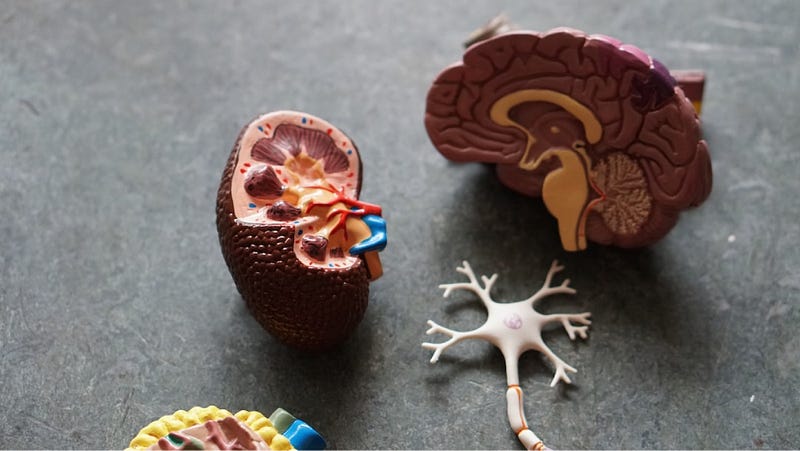Understanding Fluoride: Its Impact on Our Health and the Controversy
Written on
Chapter 1: What is Fluoride?
Fluoride, denoted by the symbol F and atomic number 9, is a chemical element that appears as a pale yellow, highly corrosive, and toxic gas. It occurs naturally in trace amounts in the earth’s crust, water, and atmosphere. This element is commonly found in various everyday products, including toothpaste, mouthwash, and tap water.

Sources of fluoride in our environment vary, with water sources containing it in amounts ranging from nearly undetectable to over 10 parts per million (ppm). Typically, concentrations in natural bodies of water like rivers and lakes hover around 0.1 to 0.2 ppm due to the interaction of rainwater with soil and other environmental factors. Fluoride is deliberately added to drinking water and dental care products, as it is thought to aid in the prevention of tooth decay.
When fluoride is either ingested or applied to teeth, it integrates into tooth enamel, enhancing its resistance to acid attacks from bacteria, thus helping to reduce cavities. According to national survey data, the recommended concentration of 0.7 milligrams of fluoride per liter of drinking water is effective in preventing tooth decay.

Chapter 2: The Debate Surrounding Fluoride
Despite its benefits, the use of fluoride in drinking water and dental products has sparked controversy. Research indicates that prolonged exposure to elevated fluoride levels may lead to adverse health effects. Some potential side effects of fluoride include:
- Tooth Discoloration: Fluoride can lead to a condition known as fluorosis, marked by white spots or streaks on teeth. In severe cases, teeth may turn yellow or brown.
- Bone Density Issues: Studies have suggested that extended exposure to high fluoride levels could result in decreased bone density, raising the risk of osteoporosis.
- Thyroid Dysfunction: There is evidence that fluoride may disrupt thyroid function, potentially resulting in weight gain and fatigue.
- Neurological Concerns: Some research hints that high fluoride levels could contribute to cognitive impairments and lower IQ in children.

It is essential to note that these negative effects are generally linked to long-term exposure to high fluoride concentrations. An individual's safe fluoride level can depend on various factors, including age, weight, and overall health. The EPA has established maximum fluoride levels for drinking water at 2 ppm to prevent enamel fluorosis and 4 ppm to avoid skeletal fluorosis. Water exceeding these limits is deemed unsafe for regular consumption.

Chapter 3: Fluoride and the Pineal Gland
What about fluoride's impact on the pineal gland? This small, cone-shaped gland in the brain produces melatonin, which helps regulate sleep-wake cycles and other hormones like serotonin and epinephrine. Some studies suggest that fluoride may accumulate in the pineal gland, potentially leading to its calcification.

Calcification refers to the buildup of calcium deposits, which can harden tissues, including the pineal gland. Although preliminary evidence suggests fluoride may contribute to this process, more research is necessary to clarify its effects on brain function and overall health.
Reducing Fluoride Exposure
To mitigate fluoride exposure and help eliminate excess fluoride from the body, consider the following steps:
- Drink Filtered Water: Use a water filter designed to remove fluoride. A reverse osmosis system can eliminate about 85-92% of fluoride from drinking water.
- Choose Fluoride-Free Dental Products: Opt for toothpaste and mouthwash without fluoride to reduce exposure.
- Select Whole Foods: Processed foods may contain fluoride; focusing on fresh, whole foods can lower exposure.
- Install a Shower Filter: Fluoride can also be absorbed through the skin while showering; a shower filter can help minimize this.
- Avoid Non-Stick Cookware: Some non-stick pans contain PFOA, which is associated with increased fluoride toxicity risk.
- Incorporate Fluoride-Removing Foods: Foods like garlic, onions, and seaweed may help eliminate fluoride from the body.

In conclusion, fluoride is an element present in many common items, such as toothpaste and drinking water. While it is believed to aid in preventing tooth decay, the potential negative side effects, including tooth discoloration, bone density loss, thyroid issues, and neurological impacts, have raised concerns. It may be wise to check the fluoride levels in your local drinking water and discuss your options with a healthcare professional.
This video, titled "Why Is There Fluoride in Water? Is It Effective?", delves into the rationale behind fluoride in water and examines its effectiveness.
In this video, "Lies People Tell About Water – Part 1: Water Fluoridation," various myths surrounding fluoride and its presence in water are addressed.